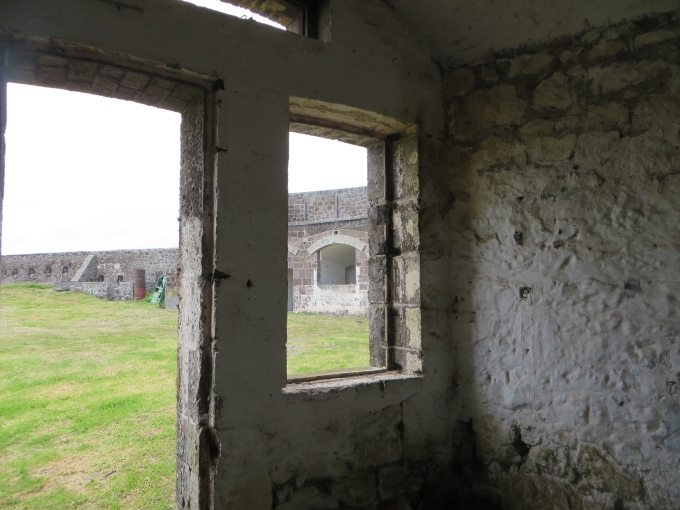St. Helena to French Guiana - Days 6 & 7
/Day 6
Miles to go: 2587
A lovely night of warm breezes and a starry sky, not quite as spectacular as the previous night, but then if every night was that special, you couldn't differentiate it from the others. A bright sunrise promised a gorgeous, happy-to-be-alive day in the South Atlantic and it kept its promise. Days like this, when the sun is beaming, it's warm and we're moving along like a hot knife through butter...these are the days that make long passages so fine.
At the change of the watch, David recounted that we'd almost been run down by a large fishing vessel as I'd slept in peaceful ignorance. What happened? He spotted a red light on the horizon heading right for us. He checked the radar. Nothing. He checked the AIS...nothing on it either...yet it continued on its collision path towards us, the red light growing brighter and brighter. A stealth ship? An apparition? An alien invasion? No...it was the rising red planet, Mars, all fiery and aglow in a dark sky. We've had the same issue with the rising of the moon and it makes for quite an adrenaline rush until you figure out what it is.
It was a calm enough day and I baked chocolate walnut muffins. David offered to cook dinner (I never say no to an offer like that) and rustled up a couple of black olive/onion/mushroom pizzas during the course of the day which sufficed not only for dinner, but will supply night watch snacks and probably tomorrow's breakfast as well ... with chocolate walnut muffin chasers.
Life is good aboard Nine of Cups. Glad you're sailing along with us.
Oh, in case you're keeping track, nary a flying fish last night. Passage total is still 4.
Day 7
Miles to go: 2,455
Seven days at sea already...a whole week and still 2,400 nm left. Based on today's stats, we've another three weeks to go. Starry sky during the night. David's been trying to spot the North Star, but it's been overcast to the north, so no luck yet. Nothing much on night watch. I did see a ship, more than 15 nm away...the first we've seen since we left St. Helena. The dawn was nothing special. No big display, and the rest of the day followed suit, but it was an okay day for wind.
SailMail, our email via radio, has been a challenge lately. Some stations are strong and fast. Others are weak and slow. Prime propagation times change. David's patient with it all. Certain frequencies are bothered by the autopilot, so he has to hand steer during transmission. The South African station was never reliable. He's been using Belgium lately...reliable, but slow. The Trinidad station, though getting closer, never answers unfortunately. Transmission has been taking 15-20 minutes to send five text emails and receive about the same. Limiting ourselves to 5 outgoing emails has been difficult considering at least 2-3 emails include position reports, a blog and weather request daily. To all of you who gripe and whinge when there's a 10 second delay on Yahoo, we have no pity. Even slow, expensive St. Helena Internet looks good right about now.
We're only 8 degrees south of the Equator...about 480 miles as the crow flies...and the midday sun is becoming more intense each day. Since we practically live outside, we've been wearing hats and slathering on sunscreen, trying to avoid burns, unnecessary UV exposure and subsequent skin cancer...a real concern for sailors. We watched a gal at St. Helena sunning herself on the sea breakwater. Does anyone remember lying in the sun and slathering on tanning oil to insure a perfectly even, deep tan? Hmmm...how times change.
By the way, some folks have wondered how we manage to post photos when we're at sea and the answer is we actually don't. We edit and send all photos in advance to Gentry in New Mexico while we still have Internet and then when we write the blogs, she has a cache of pics to post with them.
Disappointed in the flying fish lately. We obviously hold no allure for them. Once again, zero on deck this morning. I'll have to take up another hobby.
It's also Talk Like A Pirate day today. If we were on land, I think we'd celebrate with a tot of rum and we'd dig out our bandanas and eye patches and have a pirate party. As it is, we sail dry and I have no idea where our pirate garb is hidden, so we'll content ourselves with saying "Arrrrr" and "Shiver me timbers" a lot.
Enough pirate play. Come sail along. Days 8-10





















